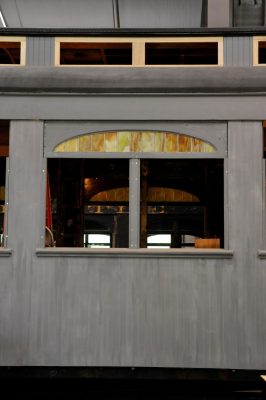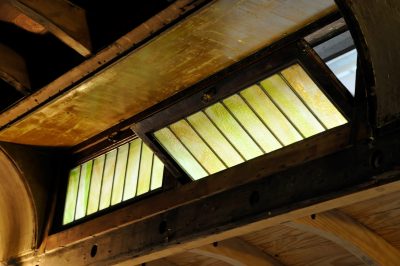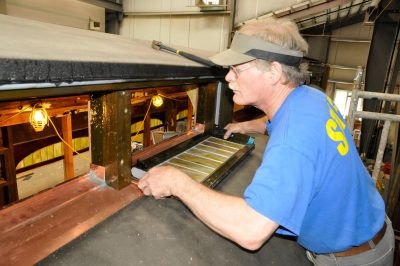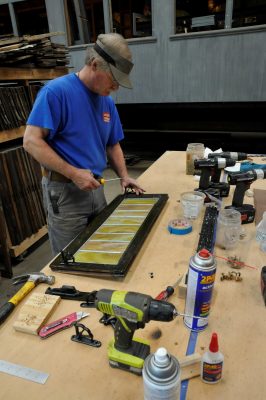Clerestory windows are a distinguishing feature of early 20th Century coaches. Obviously, these windows let light in but their primary function was – and is – to provide ventilation in an era before air conditioning, not to mention daily showers!
Coach 218 was built in 1912 and has 41 of these attractive windows. Rehabilitation and reinstallation of these windows is an important part of the coach’s rehabilitation so that museum visitors traveling in the car will experience it like travelers did in the 1920s.
Dedicated volunteers repaired, rebuilt or recreated all the color glass glazing, which is set in zinc came and soldered together. In May and early June 2013 all 41 windows were reinstalled into coach 218. Rehabilitation and reinstallation took nearly 800 person hours of labor, a significant amount of it performed by volunteers!
The clerestory window hinges are unusual, the design dates from the 19th Century. They were produced by Dayton Manufacturing, the hardware manufacturer owned by the Barney and Smith Car Company in Dayton, Ohio. Later, similar hinges were produced by Adams and Westlake, a company that remains in business today. A few of those “replacement” hinges are in the car and were likely installed as a result of a broken hinge.
So another milestone is achieved. Rehabilitation of coach 218 is moving towards completion when it will enter service on the Museum’s interpretive railway. Remaining work includes rehabilitation or repair of lower window sashes, exterior painting and lettering, metal work on end roof hoods, interior floor (maple) installation, interior paneling (mahogany) panel rehabilitation or replacement and installation, lighting and seating.








Spike, The Northwest Railway Museum sure has a dedicated and talented group working on all of these projects. Beautiful windows! Take Care, Big Daddy Dave